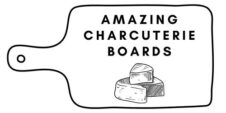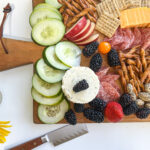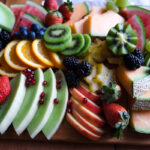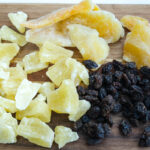Edible flowers are one of the best ways to elevate your charcuterie board and take it to the next level.
We’re diving headfirst into a world where gastronomy meets botany. It’s time to turn your average cheese-and-cured-meat spread into a petal-strewn masterpiece. In this post we’ll share the best edible flowers for charcuterie board garnish. as well as some tips on how to garnish your charcuterie board.
These edible flowers also make perfect garnishes in salads, appetizers and on cakes.
Contents
Quick Look at 10 Edible Flowers for Charcuterie Board Garnish
Below you can see the 10 top edible flowers for charcuterie board garnishes. In addition to these 10 flowers, you can also use flower as garnish that aren’t meant to be eaten, but it is important to avoid poisonous flowers. Do not simply go into your garden as many common flowers should not be eaten and can be dangerous.
Rose
Delicate rose petals bring a fragrant elegance to your charcuterie board, making them a perfect garnish for both savory and sweet bites. Their peak season spans from late spring to early summer, providing an enchanting touch to your spreads during these months. When consumed, they offer a subtly floral and slightly fruity flavor, making them a versatile addition to salads, desserts, and even infused syrups or teas.

Nasturtium
Bursting with vibrant colors, nasturtium flowers are a peppery delight that adds a playful kick to your charcuterie ensemble. Best enjoyed in the warmer months from late spring to early fall, these fiery blooms are perfect for salads, providing both visual appeal and a zesty flavor. Get creative by using them as a garnish or stuff them with cream cheese for a tangy surprise.
Calendula
Also known as marigold, calendula flowers bring a warm and tangy essence to your charcuterie board. These sunny blossoms thrive in late spring through early fall and lend themselves well to salads, soups, and rice dishes, infusing a slightly spicy and tangy note while adding a burst of color to your spread.

Lavender
The delicate allure of lavender flowers offers a sweet, floral note that gracefully elevates your charcuterie presentation. Flourishing in the summer months, these blooms are perfect for enhancing baked goods, infusing syrups, or even adding a touch of sophistication to savory dishes. Their enchanting flavor adds a hint of magic to your culinary palette.

Viola
With a spectrum of colors and a subtly sweet taste, violas are the charming companions your charcuterie board craves. These mild blooms bloom in spring and fall, becoming versatile decorations for salads, desserts, or even to fancy up your drinks. Their gentle flavor profile complements a wide array of dishes.
Chamomile
Delicate chamomile flowers bring a touch of apple-like delicacy to your culinary creations. Best harvested in the summer, these blossoms are renowned for their role in soothing teas and infusions. As a bonus, they work wonders as a garnish for desserts, providing a fragrant and flavorful finishing touch.

Pansy
Pansy flowers, with their mild minty essence, bring an understated charm to your charcuterie presentations. Blooming in late winter through spring, these blossoms are perfect for enhancing salads, desserts, or adorning cakes and pastries. Their gentle flavor and captivating colors make them a delightful addition.
Chive Blossoms
Add a hint of mild onion allure to your charcuterie spread with chive blossoms. Blossoming in late spring and early summer, these blooms bring a touch of savory to your salads, soups, and vinegar or oil infusions. Their delicate flavor dances gracefully on your taste buds.
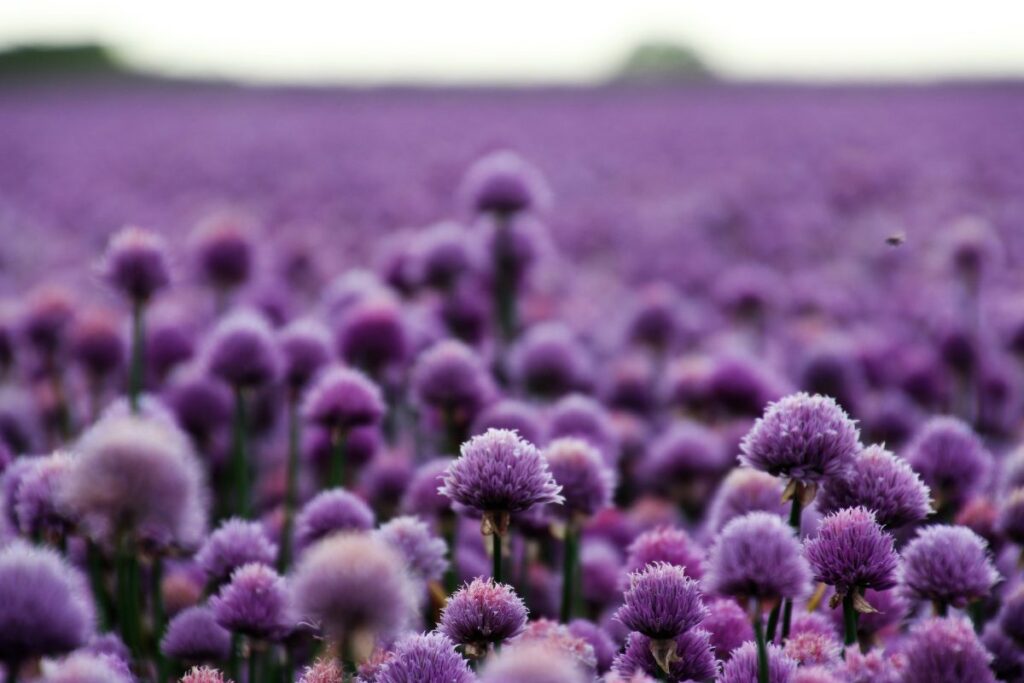
Borage
Embrace the mild cucumber flavor of borage flowers as they gracefully garnish your charcuterie masterpiece. Blooming in late spring through early summer, these blooms are ideal for salads, cocktails, or even frozen in ice cubes for a creative touch to beverages.
Dandelion
Embrace the slightly bitter, earthy charm of dandelion flowers on your charcuterie board. Blooming in the spring and summer, their petals can be used to add a unique flair to salads, jellies, or infused syrups, infusing a touch of wild wonder into your spread.
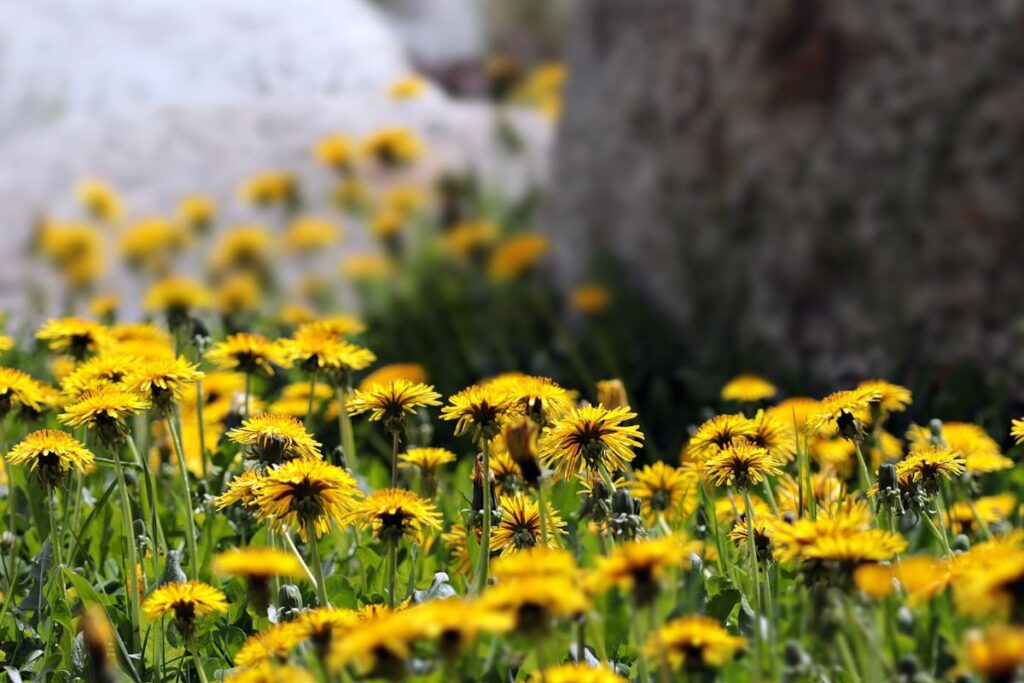
Tips for Garnishing a Charcuterie Board with Edible Flowers
Sure, here are the top tips for garnishing a charcuterie board with edible flowers:
- Freshness First: Choose edible flowers that are fresh and in their prime. Just like other ingredients, the quality of the flowers matters.
- Diverse Colors: Opt for a variety of flower colors to add visual interest to your board. Mix and match shades to create an eye-catching palette.
- Flavor Balance: Consider the flavors of both your edible flowers and the other items on the charcuterie board. Aim for a harmonious balance where the floral notes complement rather than overpower the other tastes.
- Size Matters: Select flowers of varying sizes to create depth and dimension. Larger blossoms can serve as focal points, while smaller ones can be sprinkled around as accents.
- Seasonal Sensibility: Choose flowers that are in season. Not only are they more readily available, but they also enhance the overall freshness and theme of your board.
- Minimalism is Key: Don’t go overboard with the number of flowers. A few well-placed blooms can have a more elegant impact than an excessive arrangement.
- Prep with Care: Gently wash and pat dry your flowers before placing them on the board. Remove any unwanted stems, leaves, or insects.
- Edible Varieties: Double-check that the flowers you use are indeed edible and haven’t been treated with pesticides or chemicals.
- Positioning with Purpose: Strategically place the flowers on your board, considering the colors and sizes of the other items. They can be nestled among cheeses, draped over meats, or positioned near dips.
- Delicate Handling: Edible flowers are fragile, so handle them with care. Tweezers or gentle fingers work best to place them precisely where you want them.
- Avoid Moisture: Keep moisture at bay, as it can wilt the flowers. Place them on the board just before serving to maintain their freshness.
- Inform Your Guests: If you’re serving edible flowers that might have a distinct flavor, it’s a nice touch to let your guests know. They’ll appreciate the heads-up and can fully enjoy the culinary experience.
- Be Creative: Edible flowers can be used beyond garnishing. Infuse syrups, decorate desserts, or freeze them into ice cubes for drinks—let your creativity flow.
- Texture Play: Experiment with different textures. Combining delicate petals with crunchy nuts or creamy cheeses adds complexity to both taste and appearance.
- Personal Style: Let your personal style shine through. Whether it’s an elegant arrangement or a whimsical scattering, make the charcuterie board reflect your taste and flair.

Remember, garnishing with edible flowers is an art form, so embrace the opportunity to create a stunning and delicious masterpiece that will leave your guests talking long after the last petal is devoured.
See more of the best ingredients for charcuterie boards:
- Best Bread for Charcuterie Boards
- Best Dried Fruit for Charcuterie Boards
- Best Nuts for Charcuterie Boards
- Best Fruit for Charcuterie Boards
- Best Veggies for Charcuterie Boards

